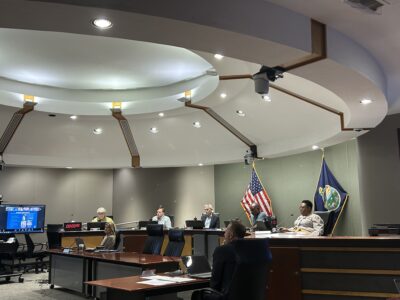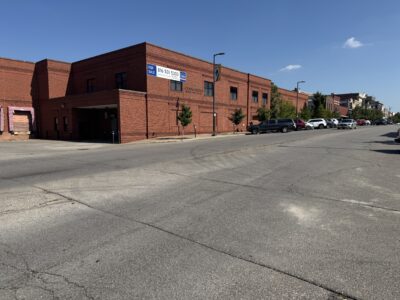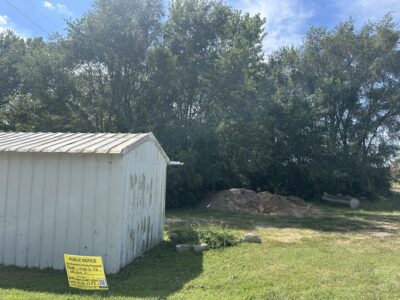County and city launch public dashboard providing real-time data on homelessness

photo by: Shawn Valverde/Journal-World
Tents at homeless camps are pictured in North Lawrence behind Johnny’s Tavern on Monday, March 11, 2024.
A public dashboard now provides real-time data on homelessness in Douglas County to support the five-year plan “A Place for Everyone” to end chronic homelessness.
Douglas County and the City of Lawrence, in collaboration with the Kansas Statewide Homeless Coalition, have launched the dashboard to track individuals who have accessed homelessness services, such as emergency shelters, transitional housing, safe havens and street outreach, within the past 90 days.
The dashboard, however, may not account for all individuals experiencing homelessness, especially those who are not connected with service providers, a news release Tuesday from the county said.
The dashboard also breaks down data into categories such as adults, families, youth, chronically homeless individuals and veterans, and includes usage stats for Lawrence’s emergency shelters, the Lawrence Community Shelter and The Village.
“Douglas County has been a Built for Zero community since March 2020, focused on ending chronic homelessness,” Assistant County Administrator Jill Jolicoeur said in the release. “A foundational part of this work is having quality data, so we know who is experiencing homelessness in real time.”
In March, 589 people were recorded as experiencing homelessness, with 79 exiting the system and 46 entering or returning, according to the release. The data comes from the Homeless Management Information System, HMIS, and the Coordinated Entry System, CES. HMIS is a database that collects information on those facing homelessness, while CES is a process within it that helps assess and connect individuals to housing and services.
“Ending chronic homelessness in Douglas County requires a coordinated system of resources in which many organizations work together,” Jolicoeur said in the release. “These systems help us gather a clearer picture of where things stand so we can work toward functional zero.”
The dashboard is available at dgcoks.gov/aplaceforeveryone.







